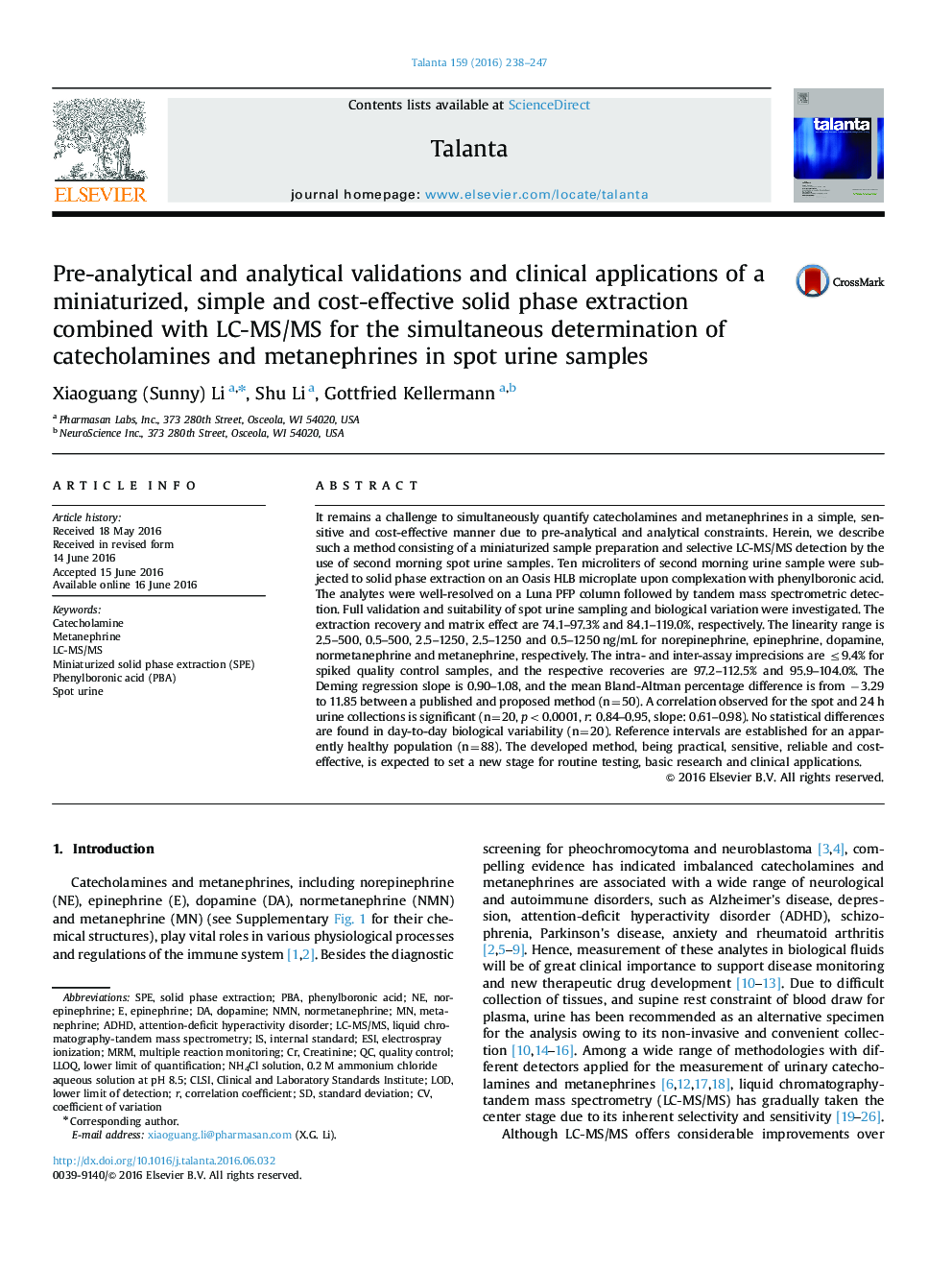| Article ID | Journal | Published Year | Pages | File Type |
|---|---|---|---|---|
| 1241771 | Talanta | 2016 | 10 Pages |
•Simultaneous determination of urinary catecholamines and metanephrines by LC-MS/MS.•Miniaturized, specific and cost-saving SPE without pH adjustment and evaporation.•Drastically reduced urine sample volume required (10 μL vs regular 500–1000 μL).•Spot urine collection validated as an alternative to the conventional 24 h urine.•Full validation and successful applications in authentic urine samples.
It remains a challenge to simultaneously quantify catecholamines and metanephrines in a simple, sensitive and cost-effective manner due to pre-analytical and analytical constraints. Herein, we describe such a method consisting of a miniaturized sample preparation and selective LC-MS/MS detection by the use of second morning spot urine samples. Ten microliters of second morning urine sample were subjected to solid phase extraction on an Oasis HLB microplate upon complexation with phenylboronic acid. The analytes were well-resolved on a Luna PFP column followed by tandem mass spectrometric detection. Full validation and suitability of spot urine sampling and biological variation were investigated. The extraction recovery and matrix effect are 74.1–97.3% and 84.1–119.0%, respectively. The linearity range is 2.5–500, 0.5–500, 2.5–1250, 2.5–1250 and 0.5–1250 ng/mL for norepinephrine, epinephrine, dopamine, normetanephrine and metanephrine, respectively. The intra- and inter-assay imprecisions are ≤9.4% for spiked quality control samples, and the respective recoveries are 97.2–112.5% and 95.9–104.0%. The Deming regression slope is 0.90–1.08, and the mean Bland-Altman percentage difference is from −3.29 to 11.85 between a published and proposed method (n=50). A correlation observed for the spot and 24 h urine collections is significant (n=20, p<0.0001, r: 0.84–0.95, slope: 0.61–0.98). No statistical differences are found in day-to-day biological variability (n=20). Reference intervals are established for an apparently healthy population (n=88). The developed method, being practical, sensitive, reliable and cost-effective, is expected to set a new stage for routine testing, basic research and clinical applications.
Graphical abstractFigure optionsDownload full-size imageDownload as PowerPoint slide
